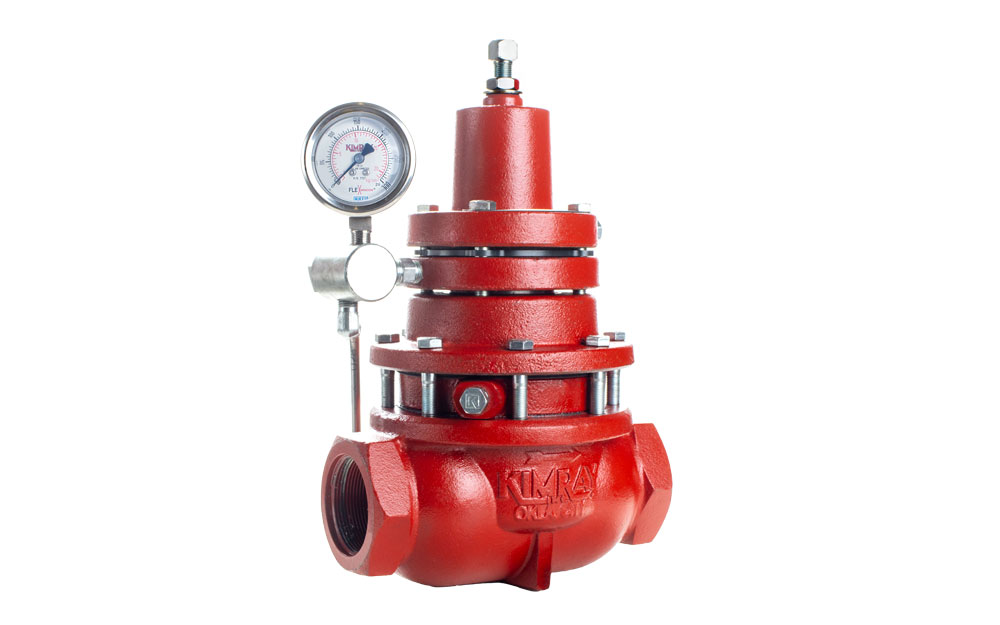What is a Free Water Knockout (FWKO)?
A free water knockout (commonly abbreviated FWKO) is an oil and gas production vessel designed to separate free water from oil and gas.
You will find this vessel mainly found in the upstream sector of the energy industry.
Different production fields have their own criteria as to when to use a free water knockout. OEMs most commonly design FWKOs for mechanical separation with baffles and inlet diversion plates. There are multiple sizes of these vessels, and knowing the fluid volume and fluid properties is important to getting the correct vessel on location.
Typically, you will have additional separating vessels located downstream from a Free Water Knockout that will further separate the emulsion.
What is “Free Water”?
Free water refers to water that is not entrained in the oil emulsion coming from a well head.
The specific gravity of this water is heavier than the rest of the fluid in the emulsion, which causes it to drop to the bottom of the Free Water Knockout.
Producers remove the free water as soon as possible for three primary reasons:
- Free water overloads piping and equipment. Shale plays in particular produce large volumes of water. It may be up to 50 or 60% of total production, depending on your region.
- Free water can be highly corrosive. Emulsions ordinarily are not corrosive because the water is dispersed in oil so only oil comes in contact with steel equipment. In other words, oil is the continuous phase.
- Free water costs more to heat. When heating the emulsion as a means of breaking it, water takes about twice as much heat as oil, driving up fuel costs.
This said, free water does have some benefits. For example:
- Free water carries heat. When produced in the tubing, oil, gas and water all start out at the same temperature, which is the reservoir temperature. Since water takes about twice as much heat as oil to raise it to a given temperature, a unit weight of water carries twice as much heat as oil. This means the water will carry reservoir heat farther downstream than oil, and it is therefore a help in eventually breaking the emulsion.
- Free water can facilitate “water wash.” When an emulsion is mixed with salt water, the washing action of the salt water has a tendency to break down the emulsion. This is called “water wash” and is incorporated into many treating systems.
How Does a Free Water Knockout Work?
A free water knockout separates the three elements of a well stream: gas, oil, and water. As the elements in the vessel separate, a liquid level controller opens a control valve to release the water downstream.
Another liquid level controller performs the same function for the middle oil emulsion layer.
Finally, the gas is released through the top of the vessel and sent downstream for further treatment, flaring, or to a sales line.
Depending on the pressure requirements, either a Back Pressure Regulator or High Pressure Control Valve is used to hold pressure on the vessel.
FWKO Design
Mechanical separation is the most common design in of control for free water knockouts.
When the oil, gas and water enter Inlet of the FWKO, mechanical separation inside the vessel help separate the emulsion. While designs differ, there are two elements nearly all FWKOs will have:
- An Inlet Diverter causes the emulsion to break up and separation to begin. It reduces the disturbance of the inlet fluids and keeps them from creating a channel through the vessel.
- A Quieting Baffle is located about halfway down the length of the vessel. As the flow comes through, the holes in the baffle slow down the motion inside the vessel.
Two Phase Free Water Knockout
In a 2-phase FWKO, the free water leaves through a dump valve, and the oil gas emulsion exits through the connection near the top of the vessel.
3 Phase Free Water Knckout
In a 3-phase FWKO, the oil, water, and gas are separated from each other in the same vessel. Oil will exit through one dump valve, water through another, and the gas will exit through a gas outlet at the top of the vessel.
Two-phase FWKOs are more economical to build and maintain, but must be used with additional vessels for further separation.
Three-phase knockouts are more expensive to build and maintain, but can work in conjunction with other equipment as well as independently.
What is the Working Pressure for a FWKO?
Working pressure is the designed maximum pressure of the vessel. For FWKOs, this is typically under 250#.
The operating pressure is the pressure to which the vessel has been adjusted for the process to be completed and the fluid produced to be moved next destination.
Producers typically operate FWKOs at lower pressures due to the use of floats in most cases. (The hollow floats can collapse if over pressured.)
Producers use mechanical, pneumatic and electric valves to control Free Water Knockouts.
What’s the Difference Between a Free Water Knockout and a Separator?
A free water knockout is often referred to as a separator. It may be labeled “three-phase separator” as it separates gas, oil emulsion, and free water.
To speak with an expert about how we can help control your free water knockout, contact your local Kimray store or authorized distributor.




























